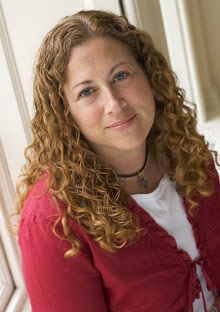
Photo courtesy of Jodi Picoult
The best-selling writer handpicks five 20th-century novels that provoke, haunt, enchant, and upend her thinking (in the best way possible).
I think we have stories because they help us understand who we are. But there's a tendency to assume that a story must be ingested in a certain way, that it must mean one thing. So readers are always trying to ferret out the truth. I want to argue that this idea is a raging and utter lie. The reader brings as much to the book as the writer does: You're bringing your past, you're bringing your thoughts, you're bringing your future. It's my job as a writer to tell you a story that's going to take you away from whatever you're doing—your laundry, your kids, whatever—but that, to me, is the least important part. When I sit down to write a book, my goal is to make you ask yourself, "Why are my opinions what they are?" I'm not going to make you change them necessarily. You might if I've done a good job, but at the very least, you're going to ask yourself where you stand on a given issue. To me, the mark of a great book is that it can move a variety of people, even though each person is connecting in a different way. The purpose of a story is to be a crowbar that slides under your skin and, with luck, cracks your mind wide open.
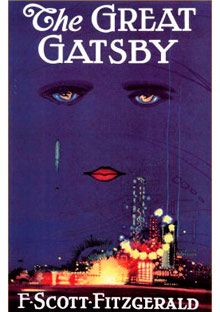
The Great Gatsby
By F. Scott Fitzgerald
I love this book because it's the gold standard for unreliable narrators. Nick Carraway tells us the story of Jay Gatsby and Daisy; he tells us he isn't going to pass judgment on the characters, but he manages to overlook things, like Gatsby's bootlegging trade and that Daisy's husband is cheating on her. The result is that the character Gatsby remains a mystery long after you've finished the book.
One scene I remember is Daisy in Gatsby's bedroom, exclaiming over his beautiful shirts. It's this great moment of crisis for her: She spurned the man she loved because he didn't have money, and now he does. She realizes her life could have been very different, and she can't even articulate that to herself.
By F. Scott Fitzgerald
I love this book because it's the gold standard for unreliable narrators. Nick Carraway tells us the story of Jay Gatsby and Daisy; he tells us he isn't going to pass judgment on the characters, but he manages to overlook things, like Gatsby's bootlegging trade and that Daisy's husband is cheating on her. The result is that the character Gatsby remains a mystery long after you've finished the book.
One scene I remember is Daisy in Gatsby's bedroom, exclaiming over his beautiful shirts. It's this great moment of crisis for her: She spurned the man she loved because he didn't have money, and now he does. She realizes her life could have been very different, and she can't even articulate that to herself.
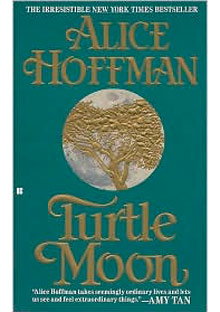
Turtle Moon
By Alice Hoffman
This was the first book I remember reading for pleasure after I got out of college, and I fell in love with Alice Hoffman's writing. A young single mother is murdered in her apartment, and suddenly her baby goes missing. It turns out that Keith, a 12-year-old described as "the meanest boy in Verity," also happens to disappear. This story has a driving plot and memorable characters, but what makes it special to me is what she does with magical realism; she takes characters you could have run into at the grocery store, then mixes in bits like ficus bushes bursting into flame and angels who hang out in front of Burger King. When you start adding elements like that, the reader thinks, "You know, in life, anything can happen." That, to me, is the whole point of fiction.
By Alice Hoffman
This was the first book I remember reading for pleasure after I got out of college, and I fell in love with Alice Hoffman's writing. A young single mother is murdered in her apartment, and suddenly her baby goes missing. It turns out that Keith, a 12-year-old described as "the meanest boy in Verity," also happens to disappear. This story has a driving plot and memorable characters, but what makes it special to me is what she does with magical realism; she takes characters you could have run into at the grocery store, then mixes in bits like ficus bushes bursting into flame and angels who hang out in front of Burger King. When you start adding elements like that, the reader thinks, "You know, in life, anything can happen." That, to me, is the whole point of fiction.

Out of Africa
By Isak Dinesen
If you've seen the movie, you know her story: Isak Dinesen is the pen name of Karen Blixen, who leaves Denmark for a coffee farm in Africa. What she learns about herself in the process of acclimating to this very difficult land forms the basis of the book. It's like poetry; you can feel Africa come alive in the words. What's fascinating is that Dinesen was known for writing Gothic fairy tales full of flowery language, but this book is light, open, airy—very much like the African savanna. It seems as if the stark beauty of the continent required her to find a new way of describing things. What has always interested me is how Dinesen reveals the least about the things that meant the most. The best example is the relationship between her and Denys Finch-Hatton. The most glaring omissions occur when she talks about Denys. I love the idea of writers who realize that words sometimes cannot begin to cover the things they need to say.
By Isak Dinesen
If you've seen the movie, you know her story: Isak Dinesen is the pen name of Karen Blixen, who leaves Denmark for a coffee farm in Africa. What she learns about herself in the process of acclimating to this very difficult land forms the basis of the book. It's like poetry; you can feel Africa come alive in the words. What's fascinating is that Dinesen was known for writing Gothic fairy tales full of flowery language, but this book is light, open, airy—very much like the African savanna. It seems as if the stark beauty of the continent required her to find a new way of describing things. What has always interested me is how Dinesen reveals the least about the things that meant the most. The best example is the relationship between her and Denys Finch-Hatton. The most glaring omissions occur when she talks about Denys. I love the idea of writers who realize that words sometimes cannot begin to cover the things they need to say.
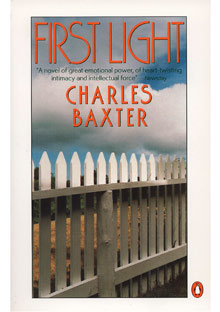
First Light
By Charles Baxter
This is a simple, character-driven story. Hugh and Dorsey Welch are brother and sister, born in a small Michigan town, who are meeting after about 10 years of estrangement. What you would expect in a normal novel is to see their reconciliation. Instead, Baxter does something out of the ordinary: He shows us how they became estranged. The second chapter takes a step backward in time—and the third takes a step beyond that. He tells the entire story in reverse. This book impressed me so much that when I finished it, I remember saying, "One day I will write a book in reverse."
By Charles Baxter
This is a simple, character-driven story. Hugh and Dorsey Welch are brother and sister, born in a small Michigan town, who are meeting after about 10 years of estrangement. What you would expect in a normal novel is to see their reconciliation. Instead, Baxter does something out of the ordinary: He shows us how they became estranged. The second chapter takes a step backward in time—and the third takes a step beyond that. He tells the entire story in reverse. This book impressed me so much that when I finished it, I remember saying, "One day I will write a book in reverse."
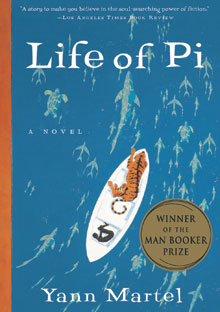
Life of Pi
By Yann Martel
The story sounds like the beginning of a joke: a boy, a hyena, a zebra, an orangutan, and a tiger floating on a lifeboat in the Pacific. Eventually, the hyena eats the zebra and the orangutan, then the Bengal attacks the hyena. The boy, Pi, is left with the tiger. When Pi washes ashore, he's met by some Japanese. He tells them his story, and they think he's crazy. So he gives them an alternative, saying that he was on the lifeboat with three other people, one a bloodthirsty chef who killed the others. The Japanese (and the reader) are left to decide which version they like more. From a writing standpoint, what makes this novel wonderful is that it asks questions: How do we make people believe our stories? Is there one way of telling a story, or are there many? What do we need to believe as readers, and, above all, to whom does this story belong—the writer or the person reading it?
By Yann Martel
The story sounds like the beginning of a joke: a boy, a hyena, a zebra, an orangutan, and a tiger floating on a lifeboat in the Pacific. Eventually, the hyena eats the zebra and the orangutan, then the Bengal attacks the hyena. The boy, Pi, is left with the tiger. When Pi washes ashore, he's met by some Japanese. He tells them his story, and they think he's crazy. So he gives them an alternative, saying that he was on the lifeboat with three other people, one a bloodthirsty chef who killed the others. The Japanese (and the reader) are left to decide which version they like more. From a writing standpoint, what makes this novel wonderful is that it asks questions: How do we make people believe our stories? Is there one way of telling a story, or are there many? What do we need to believe as readers, and, above all, to whom does this story belong—the writer or the person reading it?




